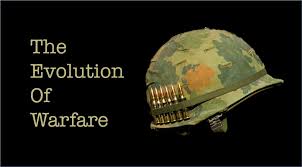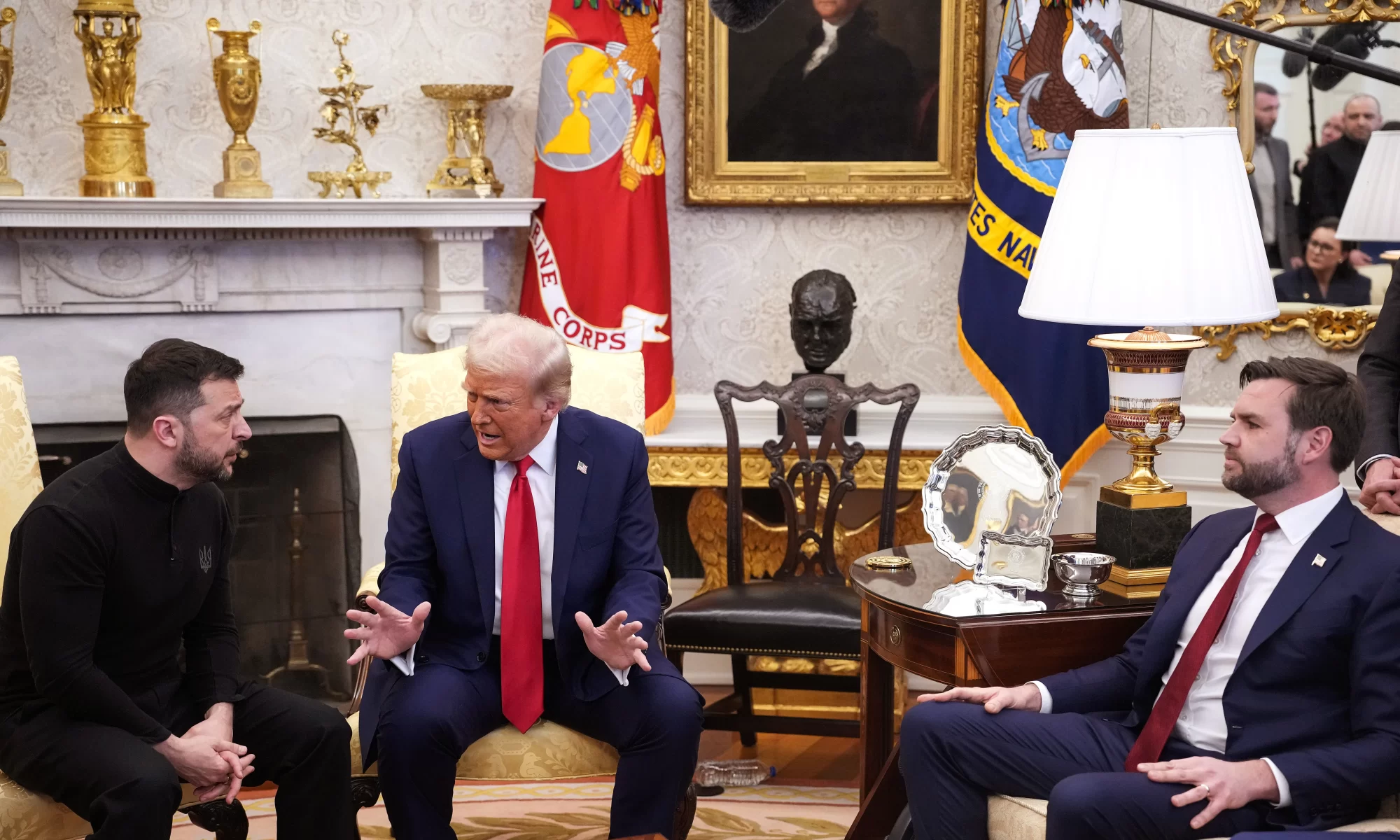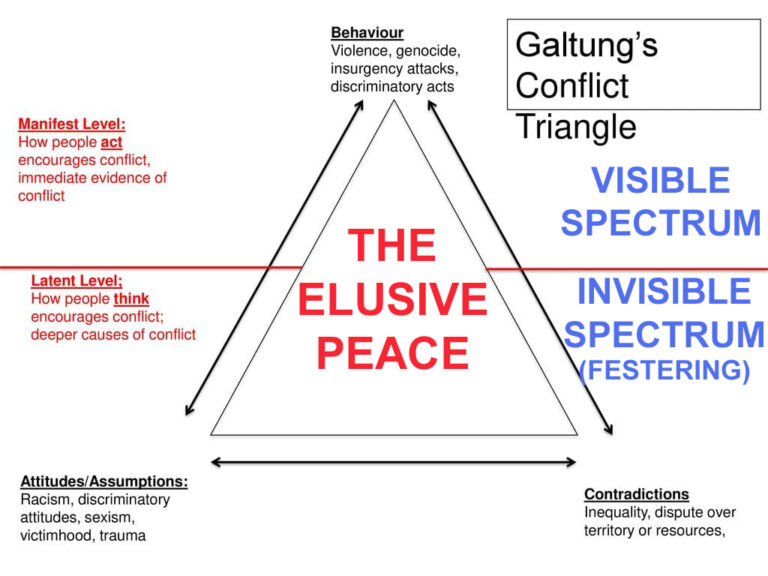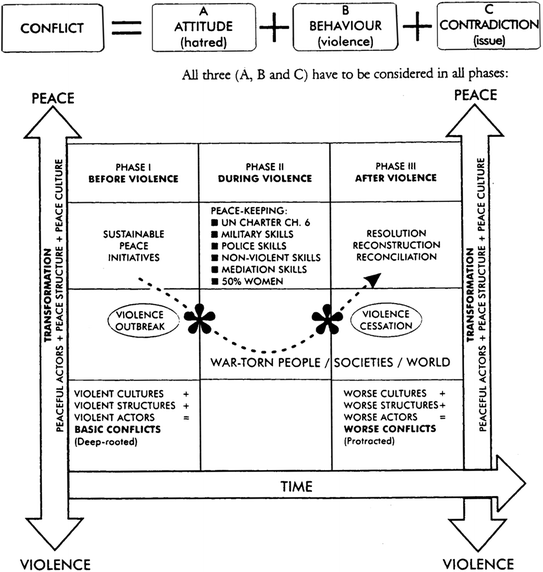Presented My paper at the Forum for Global Studies
Warfare has been a defining element of human civilisation, shaping societies, economies, and political landscapes. It has undergone profound transformations throughout history, reflecting technological, strategy shifts, and global power dynamics. From the ancient world’s phalanxes and legions to the medieval era’s siege warfare, military tactics evolved alongside societal advancements. The gunpowder revolution reshaped battlefields, leading to industrialised warfare in the 19th and 20th centuries. The World Wars introduced mechanised combat and nuclear deterrence, while contemporary conflicts emphasise cyber warfare, asymmetric strategies, and precision-guided munitions. Each period’s innovations and doctrines have shaped the conduct of war and global security.
Ancient Warfare (3000 BC – 500 AD)
Rudimentary weaponry, massed formations, and reliance on close-quarters combat characterised ancient warfare. Civilisations such as the Egyptians, Sumerians, Greeks, and Romans developed structured military forces that relied on discipline, organisation, and evolving battlefield tactics.
Key Features. A combination of infantry-based combat, siege tactics, chariot warfare, and naval engagements defined ancient warfare. Infantry formations such as the Greek phalanx and Roman Legion provided disciplined, cohesive units capable of overwhelming enemies through coordinated movements and superior training. Meanwhile, as civilisations fortified cities, primitive siege warfare developed, employing battering rams, siege towers, and catapults to breach enemy defences. Beyond land battles, chariots revolutionised mobility in warfare, particularly among the Egyptians and Hittites, where swift, highly manoeuvrable chariot units allowed for rapid strikes and battlefield control. However, naval engagements also played a crucial role in shaping military dominance. The Greco-Persian Wars demonstrated the importance of maritime power, with triremes warships enabling the Greeks to secure critical victories, such as at Salamis island in 480 BC. These key features of ancient warfare shaped military strategies, allowing the civilisations to expand their influence, defend their territories, and establish powerful empires.
Notable Conflicts.
-
- The Peloponnesian War (431–404 BC). The Peloponnesian War between Athens and Sparta reshaped Greek warfare by demonstrating the effectiveness of prolonged sieges, naval blockades, and attritional strategies. Sparta’s victory, aided by Persian naval support, marked the decline of Athenian maritime supremacy and the rise of land-based military dominance, influencing future Greek and Macedonian tactics.
-
- The Punic Wars (264–146 BC). The Punic Wars between Rome and Carthage introduced large-scale naval warfare, siege tactics, and strategic land battles. Rome’s development of the Corvus boarding device revolutionised maritime combat, while Hannibal’s campaigns showcased innovative manoeuvre warfare. Rome’s victory solidified its dominance for centuries, shaping imperial military strategies through adaptation and logistics.
-
- The Roman Conquests (509 BC – 476 BC). Rome’s conquests expanded military engineering, battlefield tactics, and logistical superiority. The disciplined Roman legions, advanced siegecraft, and road networks facilitated rapid mobilisation. These innovations influenced medieval and modern warfare through professional armies, combined arms tactics, and fortified frontiers like Hadrian’s Wall, ensuring Roman influence on military strategy long after its fall.
Medieval Warfare (500 AD – 1500 AD)
Following the fall of the Western Roman Empire, medieval warfare evolved with the rise of feudalism. Conflicts were dominated mainly by heavily armoured knights, fortified castles, and protracted sieges.
Key Features. Feudal levies, castle sieges, religious conflicts, and the rise of professional armies defined medieval warfare. Lords provided knights in exchange for land, creating a decentralised military structure reliant on vassalage. The prominence of castles led to advanced siege techniques, including trebuchets and early gunpowder artillery. Religious conflicts, such as the Crusades, combined faith and military ambition, fuelling prolonged wars between Christian and Muslim forces. By the late medieval period, centralised states moved away from feudal levies, maintaining professional armies for greater stability and efficiency. This transition laid the foundation for modern military organisation and state-controlled warfare.
Notable Conflicts
-
- The Crusades (1095–1291) were religious wars between Christian and Muslim forces. They drove military advancements in siege tactics, fortifications, and logistics. They facilitated cultural exchanges, introduced European knights to advanced Islamic warfare techniques, and contributed to the eventual decline of feudal armies.
-
- The Hundred Years’ War (1337–1453) saw the rise of longbows, gunpowder weaponry, and professional armies, diminishing feudal knightly dominance. It led to stronger centralised states, particularly in France and England, influencing the shift toward modern military structures and the decline of feudal warfare.
-
- The Mongol Conquests (1206–1368). The Mongol conquests revolutionised warfare through superior mobility, psychological tactics, and siegecraft. Their composite bows, disciplined cavalry, and adaptable strategies reshaped military doctrines, demonstrating the effectiveness of rapid, coordinated strikes and influencing future empires’ approach to large-scale warfare.
Early Modern Warfare (1500 AD – 1800 AD)
The advent of gunpowder weaponry and the centralisation of states led to radical changes in military tactics and organisation. The early modern period witnessed the emergence of large professional armies, advanced artillery, and global conflicts fuelled by colonial ambitions.
Key Features. The Gunpowder Revolution transformed warfare, as muskets and cannons rendered armoured knights obsolete, leading to the dominance of infantry and artillery. Naval advancements enabled European powers to expand overseas, sparking global conflicts over trade and colonies. On land, armies adopted linear tactics, using disciplined line infantry formations to maximise firepower and manoeuvrability. Simultaneously, the rise of centralised nation-states allowed governments to directly control military funding, organisation, and strategy, leading to larger, more professional armies. These developments shaped early modern warfare, shifting power from feudal lords to centralised monarchies and paving the way for global empires and nation-based conflicts.
Notable Conflicts
-
- The Thirty Years’ War (1618–1648) devastated Europe, advancing gunpowder warfare, mass conscription, and siege tactics. It led to the professionalisation of armies and the Treaty of Westphalia, which established the modern concept of sovereign nation-states, influencing future diplomatic and military conflicts.
-
- The Napoleonic Wars (1803–1815). The Napoleonic Wars introduced mass conscription, rapid manoeuvre warfare, and the corps system, revolutionising military organisation. Napoleon’s strategies emphasised mobility and decisive engagements, shaping modern warfare. These wars also influenced nationalism, strengthening state-controlled military structures in Europe and beyond.
-
- The American Revolutionary War (1775–1783) demonstrated the effectiveness of guerrilla tactics, citizen militias, and alliance-based warfare. It influenced future revolutions by proving that disciplined irregular forces could challenge established armies, leading to global shifts in colonial conflicts and military strategy.
Industrial Warfare (1800 AD – 1945 AD)
The Industrial Revolution transformed warfare, introducing mechanised armies, mass conscription, and unprecedented levels of destruction. Industrialised nations leveraged technological advancements to wage large-scale wars.
Key Features. The 20th century saw warfare evolve through mass mobilisation, mechanisation, and new strategic doctrines. Total war concepts led to entire populations being drafted, fuelling large-scale conflicts. Mechanised warfare, with tanks, aeroplanes, and automatic weapons, revolutionised combat, replacing traditional cavalry and infantry dominance. World War I introduced trench warfare, creating static, attritional battlefields. By World War II, strategic bombing devastated cities, making airpower a decisive force. The advent of nuclear weapons fundamentally altered global conflicts, introducing deterrence strategies that shaped Cold War geopolitics. These developments transformed warfare from localised battles to global, highly destructive confrontations with long-lasting consequences.
Notable Conflicts
-
- The American Civil War (1861–1865) introduced rifled muskets, trench warfare, and rail-based logistics, increasing battlefield lethality. It marked the transition from Napoleonic tactics to modern warfare, emphasising industrial production, mass mobilisation, and total war strategies, influencing future global conflicts.
-
- World War I (1914–1918) saw trench warfare, machine guns, poison gas, and early tanks, which created prolonged stalemates. It revolutionised military strategy, leading to combined-arms tactics and mechanised warfare, shaping modern combat and setting the stage for even deadlier conflicts in World War II.
-
- World War II (1939–1945). World War II introduced blitzkrieg tactics, strategic bombing, and nuclear weapons, making it the most destructive war in history. It accelerated technological advancements, solidified total war strategies, and reshaped global power structures, leading to the Cold War and modern military doctrines.
Cold War and Proxy Warfare (1945 AD – 1991 AD)
The Cold War era was defined by ideological conflict between the United States and the Soviet Union. The confrontation was primarily avoided, but both superpowers engaged in proxy wars and an arms race, including nuclear deterrence strategies.
Key Features. The Cold War era redefined warfare through nuclear deterrence, preventing full-scale conflicts under the mutually assured destruction (MAD) doctrine. Instead, proxy wars featured guerrilla tactics and insurgencies, as seen in Vietnam and Afghanistan, where asymmetrical warfare challenged conventional military forces. Technological advancements, including the space race, intelligence warfare, and precision-guided munitions, revolutionised military strategy, emphasising surveillance and targeted strikes. Special Forces operations became vital, with covert missions, espionage, and psychological warfare shaping geopolitical struggles. These developments shifted warfare from direct military confrontations to strategic manoeuvring, proxy conflicts, and advanced technology-driven engagements that continue to influence modern military doctrines.
Notable Conflicts.
-
- The Korean War (1950–1953) demonstrated the effectiveness of combined arms warfare, air superiority, and mechanised infantry in a Cold War proxy conflict. It solidified Korea’s division, reinforced U.S. military commitments worldwide, and established the precedent for limited wars without direct nuclear confrontation between superpowers.
-
- The Vietnam War (1955–1975) highlighted the power of guerrilla tactics, asymmetrical warfare, and psychological operations. It exposed the limitations of conventional military superiority against determined insurgencies, leading to shifts in U.S. war strategy and influencing future conflicts by emphasising counterinsurgency, intelligence gathering, and political warfare.
-
- The Soviet-Afghan War (1979–1989) showcased the effectiveness of guerrilla warfare against a technologically superior adversary. The U.S.-backed Mujahedeen used ambush tactics and Stinger missiles to counter Soviet forces, contributing to the collapse of the USSR and shaping future insurgencies, including modern jihadist movements and asymmetric warfare strategies.
Contemporary Warfare (1991 AD – Present)
The post-Cold War era has seen a shift towards unconventional warfare, cyber warfare, and terrorism-driven conflicts. Traditional state-versus-state wars have become less common, replaced by asymmetric engagements, hybrid warfare, and precision strikes.
Key Features. Modern warfare has evolved beyond traditional battlefields, incorporating cyber warfare, drones, AI, and hybrid tactics. Nations now engage in digital conflicts, targeting critical infrastructure and intelligence networks through cyber attacks. Meanwhile, drones and AI-driven systems have revolutionised surveillance and precision strikes, reducing the need for human-operated missions. Hybrid warfare blends conventional military strategies with irregular tactics and cyber operations, creating complex battle environments. Non-state actors like ISIS and Al-Qaeda further complicate security landscapes, challenging traditional counterinsurgency strategies. Regional conflicts and proxy wars, such as the Syrian Civil War, the War on Terror, and the Russia-Ukraine War, exemplify modern geopolitical struggles where global powers support different factions to further strategic interests. These evolving methods of warfare highlight the increasing overlap between technology, statecraft, and military operations, requiring nations to adapt their defence and security strategies to counter emerging threats in an unpredictable global environment.
Notable Conflicts
-
- The Gulf War (1990–1991) showcased the dominance of modern airpower, precision-guided munitions, and electronic warfare. The U.S.-led coalition’s swift victory over Iraq demonstrated the effectiveness of network-centric warfare, integrating real-time intelligence with advanced weaponry. This war redefined conventional military strategy, emphasising air superiority, rapid mobilisation, and technological advancements that continue to shape modern combat operations.
-
- The War on Terror (2001–Present) revolutionised counterinsurgency and counterterrorism strategies, prioritising asymmetric warfare and intelligence-driven operations. U.S.-led campaigns in Afghanistan and Iraq relied heavily on drones, Special Forces, and cyber warfare. However, prolonged conflicts exposed the challenges of nation-building and insurgency suppression, highlighting the limits of conventional military power against decentralised terrorist networks like Al-Qaeda and ISIS.
-
- The Russia-Ukraine War (2022–Present) has underscored the significance of drone warfare, cyber operations, and Western-supplied precision weaponry. Ukraine’s resistance has demonstrated the power of asymmetric tactics, intelligence-sharing, and hybrid warfare. Russia’s reliance on missile strikes with Ukraine’s guerrilla air defence signals a shift toward technology-driven conflicts where cyber attacks, propaganda, and real-time intelligence play decisive roles.
-
- Israel-Hamas War (2023–Present). The Israel-Hamas War has highlighted the role of urban warfare, missile defence systems, and asymmetric tactics. Hamas’s use of tunnels, rockets, and drones contrasts with Israel’s reliance on precision airstrikes, AI-driven targeting, and the Iron Dome system. The conflict underscores the growing importance of intelligence, cyber warfare, and advanced air defence in modern asymmetric and urban battlefields.
Conclusion
Warfare has continuously evolved, adapting to technological advancements, political shifts, and strategic innovations. From the disciplined phalanxes of ancient armies to today’s cyber and AI-driven conflicts, each era has shaped the nature of war. Modern conflicts blend conventional battles with asymmetric tactics, cyber operations, and unmanned warfare, redefining military strategy. The rise of hybrid warfare and regional proxy wars highlights the complexities of global security. As nations and non-state actors harness emerging technologies, the future of warfare remains unpredictable. Understanding past epochs provides crucial insights into the ever-changing dynamics of global conflicts and their profound geopolitical consequences. While modern conflicts have become increasingly complex, the fundamental nature of war, rooted in competition for power, resources, and ideology, remains unchanged.
Please Do Comment.
For regular updates, please register your email here:-
References and credits
To all the online sites and channels.
Pics Courtesy: Internet
Disclaimer:
Information and data included in the blog are for educational & non-commercial purposes only and have been carefully adapted, excerpted, or edited from reliable and accurate sources. All copyrighted material belongs to respective owners and is provided only for wider dissemination.
References:-
- Archer, Christon I., John R. Ferris, Holger H. Herwig, and Timothy H. E. Travers. World History of Warfare. University of Nebraska Press, 2002.
- Clausewitz, Carl von. On War. Edited and translated by Michael Howard and Peter Paret, Princeton University Press, 1984.
- Keegan, John. A History of Warfare. Vintage, 1993.
- Sun Tzu. The Art of War. Translated by Samuel B. Griffith, Oxford University Press, 1963.
- Freedman, Lawrence. “The Future of War: A History.” International Affairs, vol. 95, no. 1, 2019, pp. 39–61.
- Black, Jeremy. War and the World: Military Power and the Fate of Continents, 1450–2000. Yale University Press, 1998.
- Boot, Max. War Made New: Technology, Warfare, and the Course of History, 1500 to Today. Gotham Books, 2006.
- Creveld, Martin van. The Transformation of War. Free Press, 1991.
- Keegan, John. A History of Warfare. Vintage, 1993.
- Biddle, Stephen. “The Past as Prologue: Assessing Theories of Future Warfare.” Security Studies, vol. 8, no. 1, 1998, pp. 1–74.
- Freedman, Lawrence. “The Future of War: A History.” International Affairs, vol. 95, no. 1, 2019, pp. 39–61.




